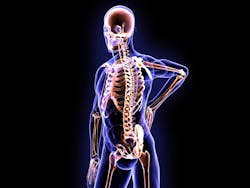Pulling Cables Safely, Part 2
Slipping and tripping are two obvious dangers when pulling cables, but other dangers lurk in the shadows of “out of sight, out of mind.” If you keep them in mind, you can reduce your risk to almost zero.
A herniated disk can sideline you for months. A rotator cuff injury is often career-ending. These injuries usually result from the “straw that broke the camel’s back”. The cable pull doesn’t cause them, it’s just the final straw. So you need to keep those straws from accumulating.
Disk injuries typically result when exertion overstrains a spine that’s out of balance. Doing core exercises such as squats will strengthen and align the spine, but only if you perform the exercises correctly; consult a certified trainer.
Rotator cuff injuries nearly always result from shoulder muscle imbalance. A common reason for rotator cuff tears is slouching, where the shoulders rotate forward instead of forming a straight line across the body. Men may exacerbate this problem by turning their shoulders forward during the bench press (so they can lift more weight).
Chronic misalignment lengthens the tendons and stretches the rear deltoids in a way that destabilizes the shoulder joint. By correcting the alignment, you make this joint strong and stable. Be sure to keep that alignment when pulling cables.
